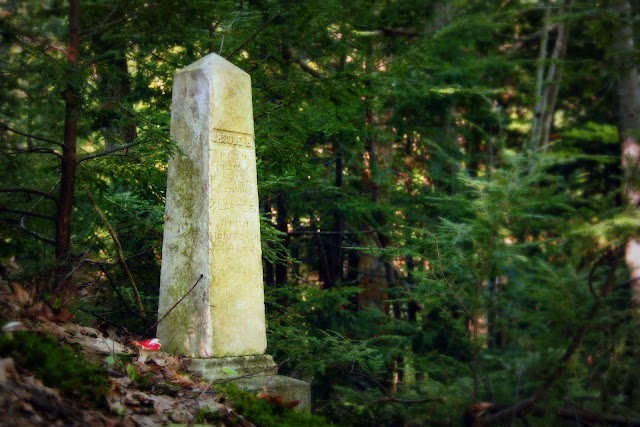Siren Song n. An enticing plea or appeal, especially one that is deceptively alluring.
The Cemetery and Mythology... not a combination one sees very frequently. That's why I was pretty excited to find the image above.
This is the stone was dated 1849 and belonged to a 53 yr old man. The cemetery is on the Coast of Maine and holds countless ship captains. There are images of anchors and boats of all kinds on various stones here. Stories of bravery and tragedy.

Could this be a grieving wife.... yes. It may even be the classic image of the Virtue - Faith.
But, this imagery makes me think it could be even more than that. The parted curtain symbolizes the entry into Heaven. The anchor, a strong symbol of a life on the Sea as well as that of Christian faith. The finger pointed upwards, yet another sign of the final reward.
Then there is the woman herself. The first thing that struck me was her long Lady Godiva style hair. A long flowing dress with what looks like bare arms.
This would have been irresistible imagery in the mid 19'th century. Is she not a wife but a temptress maybe?
So what exactly is a Siren?

Sirens were dangerous creatures who lured mariners with their beautiful music and enchanting voices to an untimely death.
They were considered the daughters of the river god Achelous. There were said to be between 2 and 5 of them existing off the islands of Greece. There are two Sirens referred to in Homer's tale the Odyssey. As well as more references in the Iliad.
Though these creatures are tied to the Sea, they are not sea maidens and are not to be confused with mermaids. In fact they are not fish-like at all.
The earliest Greek images portraying Sirens showed them as large birds with female faces. They sang like birds and were granted wings by Demeter.

This pottery portrays an interesting legend.
It is said that Odysseus was curious as to what the Sirens sung in their song to him, so, on Circe's advice, he had all his sailors plug their ears with beeswax and tie him to the mast. He ordered his men to leave him tied tightly to the mast, no matter how much he would beg. When he heard their beautiful song, he ordered the sailors to untie him but they bound him tighter. When they had passed out of earshot, only then was Odysseus untied.
The depictions of Sirens have changed over time as they became less bird like and portrayed more as femmes fatales.
There have even been references to them as the muses of the underworld.
Descriptions are also found of them on the islands, "lolling there in their meadow, round them heaps of corpses rotting away, rags of skin shriveling on their bones." Not your average maiden.
With all of the death in the 19'th century by men making their fortunes from the Sea, it is no wonder the legend of the Siren may still be found in the cemetery. Though it's origins are Greek, the Siren appears any place in the world where people feared for their lives and the unknown. Even in a small cemetery off the coast of Maine.



































 the
world. The new calendar more closely aligned with the lunar calendar,
fixing the flaw in the Julian calendar, which saw the year as 365
days and 6 hours. The new calendar counted the year as 365 days, 5
hours, and 49 minutes in length.
the
world. The new calendar more closely aligned with the lunar calendar,
fixing the flaw in the Julian calendar, which saw the year as 365
days and 6 hours. The new calendar counted the year as 365 days, 5
hours, and 49 minutes in length.










